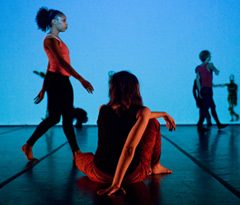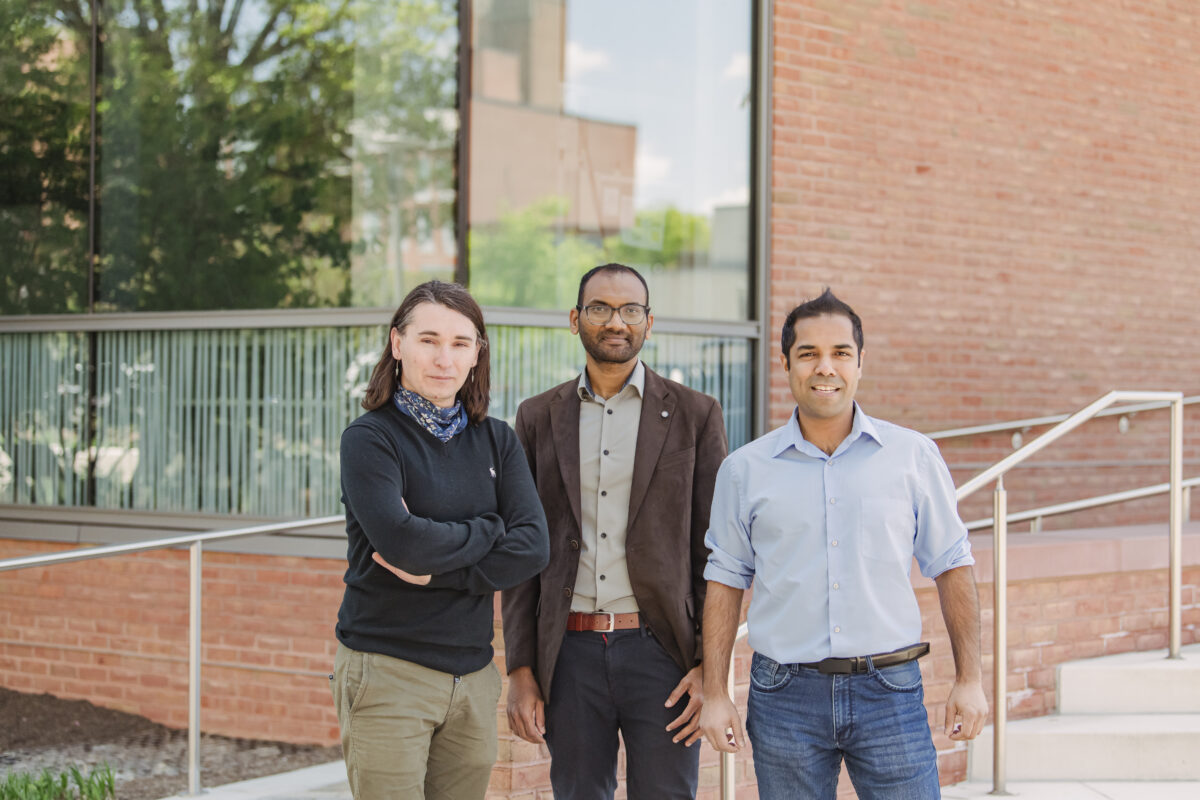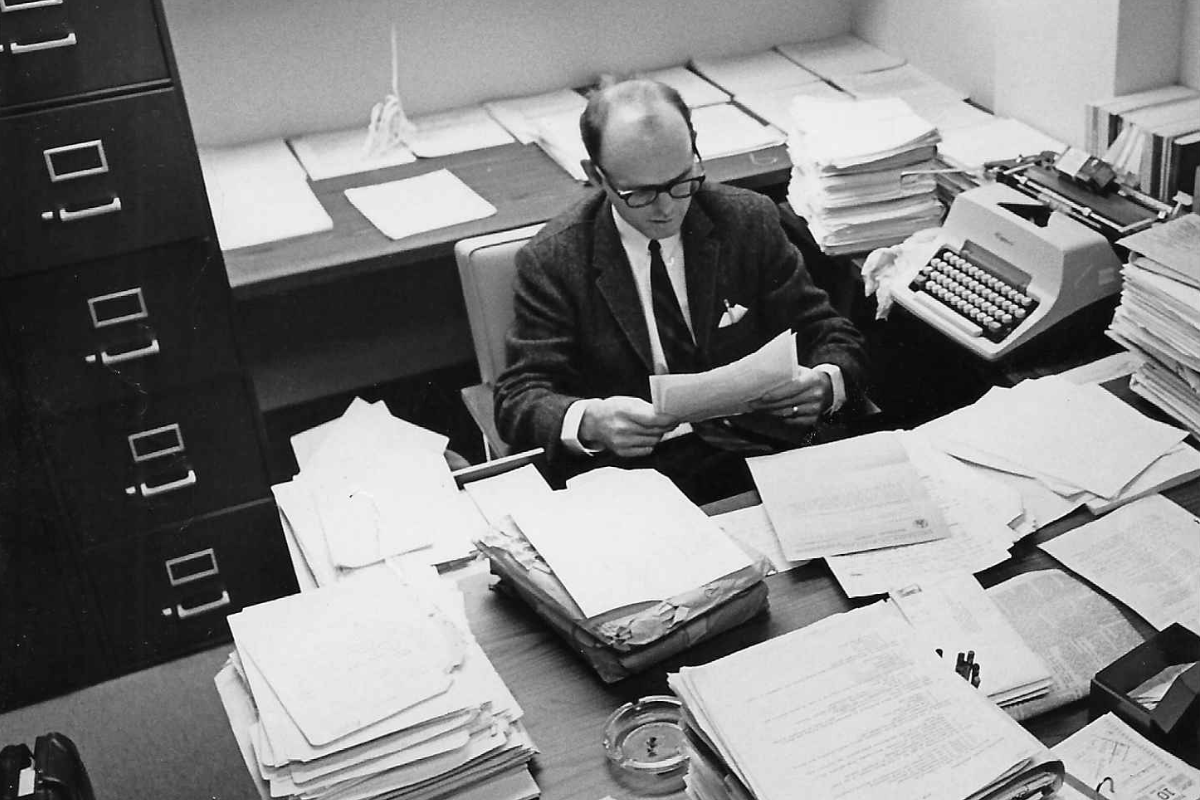Instrument for Expression
The upcoming concert by the Baltimore Dance Project is more than a performance – it’s an investigation of the human body. Featuring the work of choreographers Carol Hess (associate professor and chair of the Department of Dance), Doug Hamby (associate professor of dance) and Sandra Lacy (instructor), the concert examines the human body in time and motion.
For this group of choreographers, dance and research are intrinsically linked – especially through the exploration of the body.
“Dance research is the investigation of the human body and its physical limits as a kinetic object/machine and as an instrument for expression,” Hamby said.
An important part of dance research is the influence of technology, and for more than 10 years, Hess’s choreography has been focused on this interaction (dance and video in particular). One example is Hess’ previous work with videographers who captured movements and projected them onto screens behind the dancers. She wanted to see whether these different perspectives would affect the reaction of the audience.
Hess has been teaching the class “Dance and Technology” since 2002 and has been researching the development of the dance field in this area. Two of her works with the Baltimore Dance Project incorporate technology. In “Transparencies” and “Other Lives,” six dancers perform with animated characters as they create a virtual world of avatars. The piece was inspired by Hess’ explorations in Second Life, an online virtual world where users interact with one another through avatars.
For each dance, the choreographers used different creative processes. Hamby likes to think of his compositions as a jigsaw puzzle – creating something without knowing what it will finally be. He calls it: “the start anywhere and keep going approach.”
“In this process, I have to let the movement show me the way and trust that it ultimately will,” he said.
Hamby uses this approach in his new dance, “Stop and Go,” which will be featured at the February concert. The dance highlights a young dancer who is beginning to perform for the first time. Another one of Hamby’s compositions is “Gavotte,” which is about two dancers reacting to one another’s movements to create a comic narrative.
Lacy also uses improvisation to maximize human movement potential and expressivity.
“The body has a physical intelligence that for me is often inaccessible though the conscious mind but can be tapped through improvisation,” Lacy said. “Through improvisation I can find ways of moving and relationships that I could never have consciously choreographed.”
Performances run February 4-6 at 8 p.m. in the UMBC Theatre. More information is available online.
(1/28/10)




